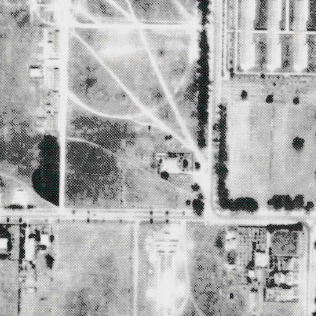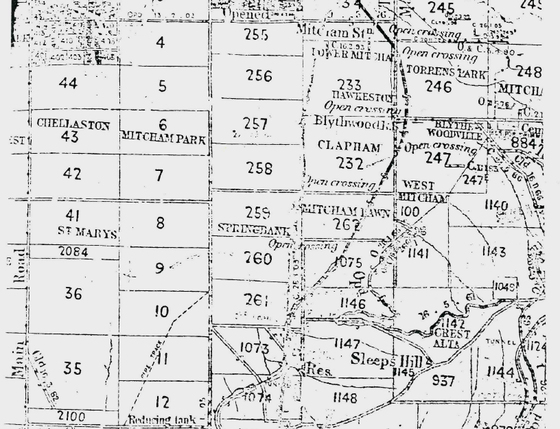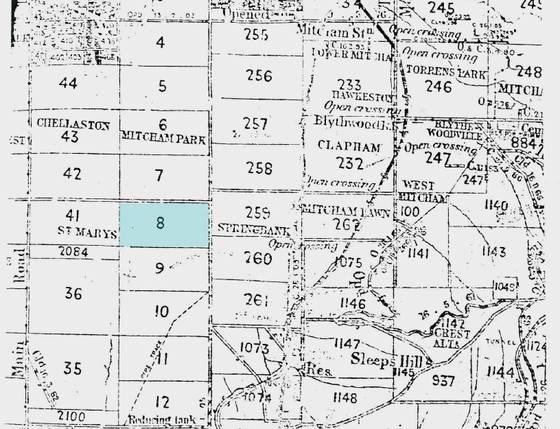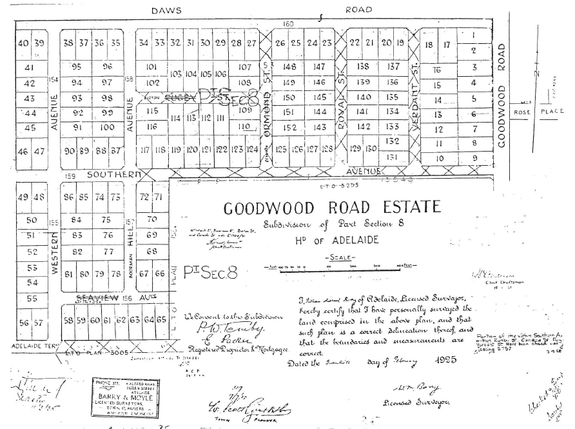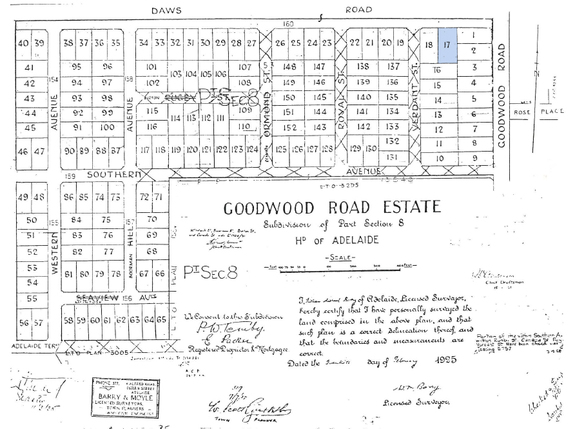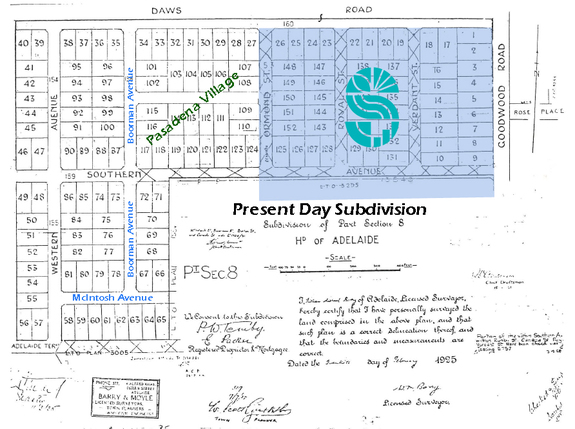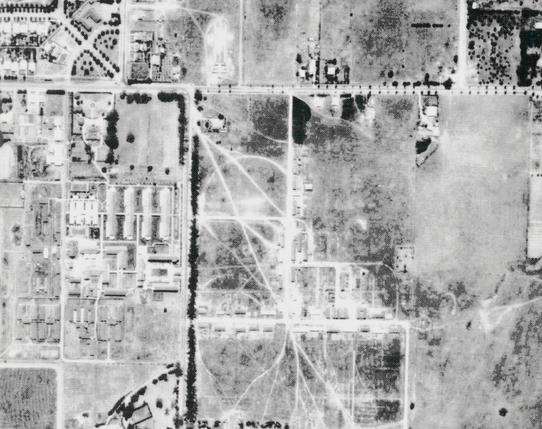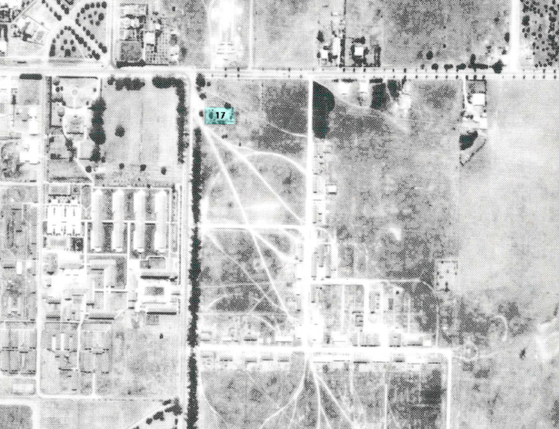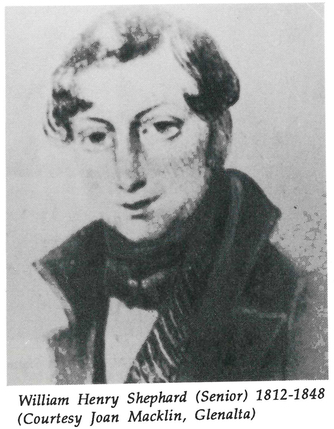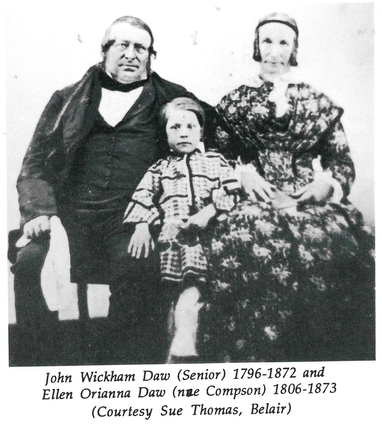On 24th October 1838, Governor Gawler signed the document called a Land Grant to entitle ownership of Section 8, District B, later Hundred of Adelaide (eighty acres) to John Edward Bright, a surgeon on North Terrace and Abraham Hopkins Davis, storekeeper. Just prior to Christmas 1839 they transferred sixty acres over to William Henry Shephard. Later this family settled on Shephard’s Hill, Bellevue Heights. W.H. Shephard was also granted the first licence to the ‘Adelaide Tavern’ on the Franklin Street, Adelaide.
In 1841 the remaining 20 acres were sold by Patrick Fennel to John Wickham Daw (1796-1872) for the sum of £40, which was added to his existing property of over two hundred acres. John W. Daw donated a portion of his land for St Marys Church. In 1842, forty acres of Section 8 were leased to Thomas Langhorn, but transferred shortly after to William Littlejohn O’Halloran who kept the land for twenty one years. Thomas Maslin appears to have bought out William H. Shephard’s land interest for £45. In 1842 Ann and William Shephard had their second child, William Thomas Shephard.
Sadly on 29th June 1848, at the age of thirty six, William Henry Shephard died. Anne Shephard lived with family in Wright Street, Adelaide for a year following his death, until relocating the family with the help of a benevolent relation in England who purchased land through Thomas Maslin, to what is now known as Bellevue Heights. After William Henry Shephard's death the family properties were put in trust to Thomas Maslin for the sole benefit of Anne Shephard and her children for the term of her natural life.
William Littlejohn O’Halloran arrived in South Australia on 9th August, 1840, almost twelve months after purchasing a Land Order for Section 7. He spent the first couple of years clearing and developing his section which he named “Clanfergeal”. The whole section soon became well established, fenced by bank and ditch and with a well sunk to a depth of fifty one feet (15.5 metres). Two acres were enclosed with an iron fence, presumably to protect the half an acre of potatoes, quarter acre of garden and an acre of maize, and a large brick dwelling-house and stockyard.
Water leaving the hills cut deep chasms across the paddocks once it reached the newly cleared clay soils of the plains and furrows made by the land holders with their ploughs. William L. O’Halloran records that much of this water formed large ponds across Daws Road for nearly two thirds of the year, sometimes to a depth of 3 feet.
On 12th May 1853 the South Australian Government Gazette proclaimed that the first District Council in South Australia of Mitcham has formed. The first council assessment listed five mansions, including “Clanfergeal”, J.W. Daw’s house and Thomas Overton’s house on what we now know as Colonel Light Gardens.
By 1868 several acres had now been sliced off Section 8 to form Daws and Goodwood Roads, while William Henry Shephard and his brother William Thomas decided to try their luck as pastoralists near Waikerie and leased part of Section 8 to William Chester and James Pinchback between 1871 and 1875.
Before the lease had expired the land was sold to George Pickett on 9th September 1874 where the land was then mortgaged to Alfred Spence giving some indication of when the little cottage was built on Allotment 17 facing Daws Road (approximate location of Springbank’s Tower Art Centre carpark).
Will documents seem to indicate that Hannah and George Pickett may have separated before she died in the spring of 1895 in Ireland. Hannah bequeathed £20 a year to her husband provided he remained a widower; George Pickett died on 17th June 1912 without leaving a will. The property then was passed onto Hannah’s brother, John Fleming, a farmer from Springbank before he leased the land to Albert B. Burford for five years. The lease was then transferred to Frederick Spackman, a farmer of Clarence Park in 1904 and onto Frederick Ashley Cooper, a stable keeper in North Croydon. Henry Cecil Herbert, a farmer of Goodwood Road took up a lease on 25th March 1905, and finally John Fleming leased it to John Maley until 1907.
Upon John Fleming’s death on 7th January 1909 administrators transferred the property to Eli Packer, the husband of John Fleming’s daughter Ellen. Eli did not appear to work the land as he was already in his mid 60s, but leased it to Thomas Farrelly who, within a month, resigned it over to a Springbank dairyman Robert Chambers for 5 years. Albert Norris then took out a four year lease between 1916 and 1920 before the ownership divided between three men; Arthur A. Hill of Malvern, Philip Waghorn of Torrens Park and the current owner and mortgage holder Eli Packer in August 1924. These three men agreed to subdivide the land as Goodwood Road Estate, but Eli Packer died in September 1925 at the age of eighty.



